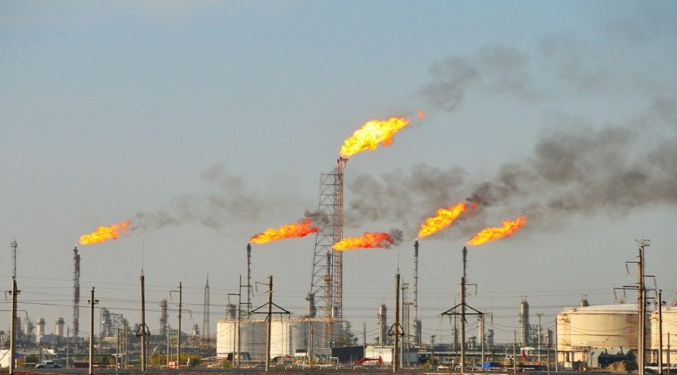
The International Energy Agency (IEA) has said that Nigeria plans to end gas flaring by 2030 and slash methane emissions to 60% by 2031.
This was stated in the October 2023 Imperative of Cutting Methane from Fossil Fuels report by the IEA.
In the report, the IEA stated that Nigeria has introduced emissions management guidelines for the upstream oil and gas sector with a clear mission: to put an end to routine gas flaring by 2030 and simultaneously achieve a substantial 60% reduction in fugitive methane emissions by 2031.
This initiative aligns with a transition driven by growing demand for cleaner energy sources to decrease fossil fuel consumption and emissions, all while ensuring consistent access to energy services.
In November 2022, the Nigerian Upstream Petroleum Regulatory Commission (NUPRC) issued guidelines with a clear objective: to establish measures for operators in the upstream oil and gas sector to prevent and manage greenhouse gas emissions at both new and existing facilities.
These guidelines aim to reduce environmental and social impacts, prevent natural resource wastage, and support Nigeria’s emissions reduction targets.
Under the stated guidelines, the NUPRC noted that within six months of the legislation taking effect, operators are required to develop and submit greenhouse gas (GHG) management plans.
These plans should encompass inventories of emission sources, and accounting methods, and establish timelines for reaching net-zero emissions.
Meanwhile, under Leak Detection and Repair (LDAR), operators must conduct regular inspections using approved methods like optical gas imaging.
The inspection schedule comprises one in the first year, two in the second year, and four inspections in subsequent years.
Operators need to promptly address large leaks within five working days and small leaks within 14 working days. Furthermore, operators must maintain records of their LDAR equipment and inspection reports, with oversight from the Commission, which will issue a certificate.
Regarding Flare Requirements, unlit flares venting gas must be fixed within 48 hours. Flare tips exhibiting sputtering or smoking should either be replaced within two years of guideline implementation or within 60 days after the second year of inspection.
According to the IEA, the global demand for oil and natural gas is projected to decline significantly, dropping by nearly 80% from 2022 to 2050, while coal demand is anticipated to plummet by over 90%.
As a result, methane emissions from fossil fuels, which stood at around 120 million metric tons in 2022, are expected to decrease to 85 million metric tons by 2030 and further down to 20 million metric tons by 2050, representing an approximately 85% reduction compared to 2022 levels.
Importantly, these reductions will occur even without specific efforts targeted at methane reduction, primarily due to the decreased production and consumption of fossil fuels.
However, it is vital to emphasize that without focused actions to curtail methane emissions originating from fossil fuel operations, the global average surface temperature is predicted to surpass a 1.6°C increase by 2050.
Such a higher temperature rise significantly heightens the risk of climate-related damages and the potential crossing of irreversible climate tipping points, underscoring the urgency of concerted efforts to mitigate methane emissions and combat climate change.
PRESS STATEMENT Nigerian Breweries PLC - The pioneer and largest brewing company in Nigeria which is…
Paris Saint-Germain star Achraf Hakimi has spoken out following his defeat by Ademola Lookman for…
Ukrainian boxer Oleksandr Usyk reinforced his position as one of the greatest heavyweight champions in…
The National Emergency Management Agency (NEMA) has said it has put all its zonal, territorial…
Erhiatake Ibori-Suenu, member representing Ethiope Federal Constituency of Delta State in the House of Representatives…
The Economic and Financial Crimes Commission (EFCC) has reportedly secured a final forfeiture order for…